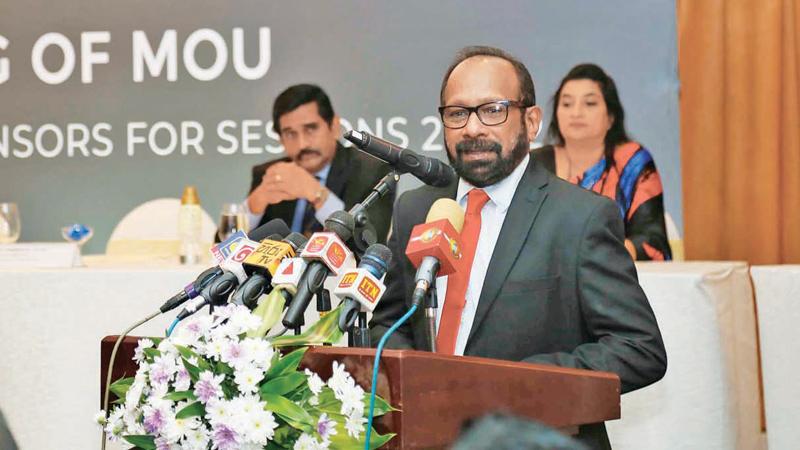
The new year looks good for architecture in Sri Lanka as the industry will benefit from the tax withdrawals and reductions which will bring down construction cost and spur investments in the industry, said Sri Lanka Institute of Architects (SLIA) President Archt. Veranjan Kurukulasuriya at an MoU signing ceremony for the ‘Architect 2020’ exhibition to be held from February 19-23 at the BMICH.
He said the SLIA welcomes the tax concessions which have come at the right time to revive the construction industry, an industry which goes hand in hand with architecture.
“The reduction of VAT and the income tax on the construction industry will help boost the construction industry which had been dormant for a while due to high taxes. More savings will result in more spending on gainful ventures which will benefit the economy,” Kurukulasuriya said, adding that tax relief will help bring down the construction cost which has been staggeringly high in Sri Lanka.
The Value Added Tax (VAT) was slashed from 15 percent to 8 percent and income tax on the construction industry from 28 percent to 14 percent besides increasing the tax-free threshold for VAT from Rs. 1 million to Rs. 25 million turnover per month, for small businesses.
Architects also said they are expecting elections to be held soon so that there would be even greater stability in the country which will auger well for all sectors, including the construction sector which depends on major investments from the country and abroad.
However, architects and construction industry personnel said there are other major issues, such as delays in obtaining approvals from local bodies, shortage of sand, and skilled workers which are some of the major issues affecting the construction industry.
“Shortage of building material and skilled workers is common in developed countries which is the case even in Singapore, which imports workers from abroad. Sri Lanka also will have to depend to a certain extent on foreign labour to meet the shortfall,’ Kurukulasuriya said, adding that the shortage of sand could be a short-lived problem as the government will come up with a solution.
Architects said what is more important is consistent and stable polices in the country to develop any sector which looks for clear direction and stability in the country.
“Policies that are ad-hoc and inconsistent have affected the construction industry badly in the past. We expect the new government to stick to policies it makes with regard to the construction industry taking a cue from developed countries where policies do not change, depending on who rules the country,” architects said.
SLIA is pleased with the current high standards of architecture of the country which was proved by the accolades bagged by various architects during the past six months.
Sri Lankan architects brought pride to the country winning six accolades from abroad this year proving their prowess in the industry to be on a par with any other country.
“We have some of the best skills in architecture and that was amply shown in the construction of the Muscat airport with the collaboration of around 30 Sri Lankan architects,” Kurukulasuriya said, adding that SLIA will focus more on the professional development program for architects as continuous professional development is the key to raising standards.
SLIA, a foremost professional organization in the country as well as in the Asian region helps promote and develop professional practices of architecture in the country.
Indian and East Asian architecture have traditionally been the most significant forms of foreign influence in Sri Lankan architecture, and both have played a significant role in shaping it. Techniques and styles developed in Europe, transported to the country via colonialism, also played a major role in the architecture of Sri Lanka, later on.
Architects, such as Geoffrey Bawa and Minnette de Silva brought fame to the country and had a world reputation from the 1960s to the 80s. Bawa has had a tremendous influence on design and construction in Sri Lanka and many of his trademark embellishments have now become typical in Sri Lankan homes and buildings.
His work has also been a significant influence on architecture across South and Southeast Asia. Today, tropical modernist architecture can also be found in Brazil, Puerto Rico, Hawaii and Ghana among other places.
